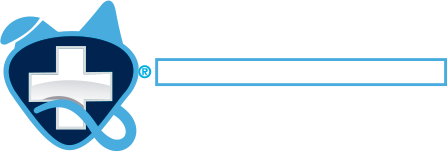Apart from masking various technical elements concerning system development, SDLC is environment friendly for process development, change administration, or person experience. The system improvement life cycle (SDLC) is an iterative, structured, and multistep course of that is utilized by groups to create high-quality info systems.
and describe user necessities for the long run info system and make certain that programmers have enough information to construct the right product. After the system analysis part is complete,
During this stage of the system lifecycle, subsystems that carry out the desired system capabilities are designed and laid out in compliance with the system specification. This is the part when a network engineer, software program developer, and/or programmer are introduced on to conduct main work on the system. This contains making certain the system course of is organized correctly by way of a circulate chart. Many consider this probably the most sturdy SDLC stage as all the labor-intensive duties are accomplished right here. Phase 4 represents the real beginning of software program manufacturing and hardware set up (if necessary).

In concept, all the prior planning and outlining ought to make the actual development part relatively simple. In the event stage of SDLC, the system creation process system development life cycle produces a working resolution. Developers write code and build the app according to the finalized necessities and specification documents.
No One Member Makes Or Breaks The Project
As a number one supplier of software safety testing options, Veracode makes it straightforward for builders and safety teams to combine safety all through the SDLC. This makes it possible for builders to seek out and repair flaws at the most cost-efficient level within the development course of and ship safer software, sooner. Iteration and velocity are vital parts of rapid application improvement or RAD. RAD hastens the event process by utilizing prototypes and gathering consumer suggestions.

It entails the activities of planning, analysis, designing, building, testing, deploying, and maintaining a system that meets or exceeds shopper expectations. The system improvement life cycle is a project administration model that defines the stages involved in bringing a project from inception to completion. Software growth groups, for instance, deploy quite a lot of system improvement life cycle fashions you might have heard of like waterfall, spiral, and agile processes. The design section of a system development life cycle is all about visualization. A system architect describes how all product components will interact with each other, defines
How To Choose On The Sdlc Model?
Planning entails defining the goal drawback, the scope and aims of the new system, project constraints, and security concerns. The final stage involves the perpetual care and assist of the tech answer. Maintenance and assist professionals stand as guardians, addressing bugs, implementing updates, and providing ongoing assistance to customers. This section ensures the sustained integrity and evolution of the developed system. Ultimately, any development group in both the IT and other industries can benefit from implementing system development life cycles into their projects.
Both end-users and system analysts should see a refined project with all essential adjustments implemented at this time. Given the method’s complexity, there are various methodologies out there that will help you manage and management the entire process. The Big Bang strategy can be appropriate for small tasks, proof-of-concept work, or situations the place requirements are imprecise and subject to frequent change.
put in on the client’s premises and prepared to begin out operating there. The V-Model emphasizes the value of verification and validation throughout the SDLC by extending the waterfall model by matching every development phase with a corresponding testing phase. This systematic strategy incorporates testing into each step, leading to a more dependable final product. However, the V-Model’s rigid structure may make it harder to regulate to changes, and its emphasis on testing may make the complete growth process take longer. Develop or purchase software and hardware elements and code according to design specs.
DevOps engineers are essential for allocating self-service resources to developers to streamline the method of testing and rollout, for which CI/CD is often employed. Object-oriented evaluation and design (OOAD) is the process of analyzing an issue domain to develop a conceptual mannequin that can then be used to guide development. During the evaluation section, a programmer develops written necessities and a proper imaginative and prescient document via interviews with stakeholders. In the seventh and ultimate part, end customers can fine-tune the completed system as necessary if they want to improve performance. Through upkeep efforts, the staff can add new capabilities and features and meet new requirements set by the shopper.
Growth
Agile is a collaborative, steady methodology that contrasts sharply with the Waterfall Model. Breaking the project up into smaller portions encourages adaptability and flexibility. Agile strategies corresponding to Scrum and Kanban enable speedy delivery of useful software program, excessive change tolerance, and ongoing customer involvement.
At its core, the planning process helps establish how a selected downside may be solved with a certain software program resolution. Crucially, the planning stage includes analysis of the sources and costs needed to complete the project, in addition to estimating the overall value of the software program developed. The waterfall is considered essentially the most conventional and inflexible system development life cycle
- During the analysis section, a programmer develops written necessities and a formal imaginative and prescient document by way of interviews with stakeholders.
- The estimation
- These parts describe the system in sufficient element that developers and engineers can develop and ship the system with minimal additional enter.
- If your group didn’t totally detail integration standards and deployment procedures, going stay with the system may cause issues for your group.
It consists of distinct phases that must be completed in a selected order. If your system is successfully developed, it will be lively for a few years, so support and maintenance should be a magnet for your staff for years. Many organizations overlook the significance of this section and fail to properly prepare the mandatory sources for it. Ongoing support and maintenance characterize essentially the most prolonged system growth life cycle part. As time passes, your system will need common assist and upkeep to keep operating and performing as expected.
Administration Abilities
Implementation requires careful planning and coordination to attenuate disruptions and ensure a clean transition from the old system to the model new one. System Design is a critical stage within the SDLC, the place the necessities gathered during https://www.globalcloudteam.com/ the Analysis phase are translated into a detailed technical plan. It includes designing the system’s structure, database structure, and user interface, and defining system parts.
The Spiral mannequin best fits massive projects where the risk of issues arising is excessive. Changes are handed via the totally different SDLC phases repeatedly in a so-called “spiral” movement. The last but not least important stage of the SDLC process is the upkeep stage, where the software is already being utilized by end-users.
To complete a new system development project, you need a conceptual model that ensures all insurance policies and goals are met. The SDLC commences with the planning section, where tech professionals strategically define the project’s scope, objectives, and resource allocation. This phase sets the foundation for a successful development journey, making certain that builders meticulously consider all aspects earlier than the coding begins. Executing all seven levels of the System Development Life Cycle is crucial to ensure the success of your project within the realm of software program improvement. One of the upsides to this model is that builders can create a working model of the project relatively early in their growth life cycle, so implementing the changes is usually less expensive.
is how these phases are structured and which one will get the most important share of the eye. Testing is crucial to the system development life cycle to make sure compliance with functional, performance, and security necessities. Ideally, testing ought to occur at each stage of the SDLC to address issues early when they are quickest and most cost effective to repair. However, checks are often postponed until later stages, particularly if they don’t seem to be properly built-in and create friction. This Model combines components of each the waterfall model and iterative growth.
System assessments are performed so as to appropriate deficiencies and adapt the system for continued improvement. Relevant questions embody whether the newly carried out system meets requirements and achieves project objectives, whether the system is usable, reliable/available, correctly scaled and fault-tolerant. Process checks embody evaluate of timelines and expenses, as properly as user acceptance. The System Development Life Cycle (SDLC) offers a well-structured framework that gives an concept, of the way to build a system. It consists of steps as follows – Plan, Analyze, Design, Develop, Implement and Maintain. Many of these fashions are shared with the event of software program, corresponding to waterfall or agile.
